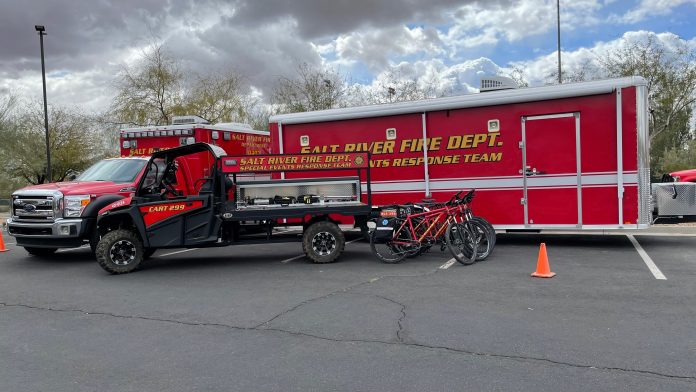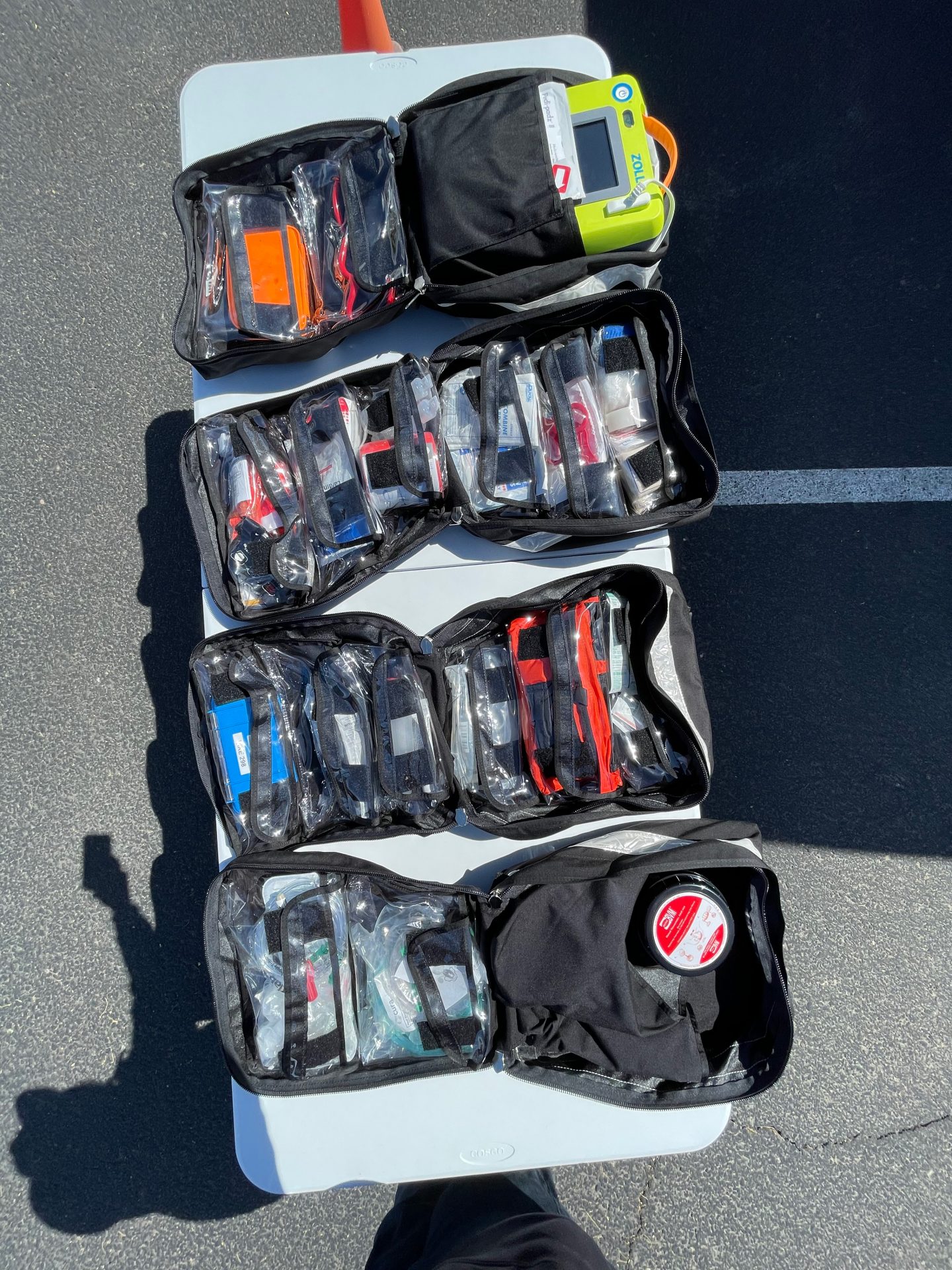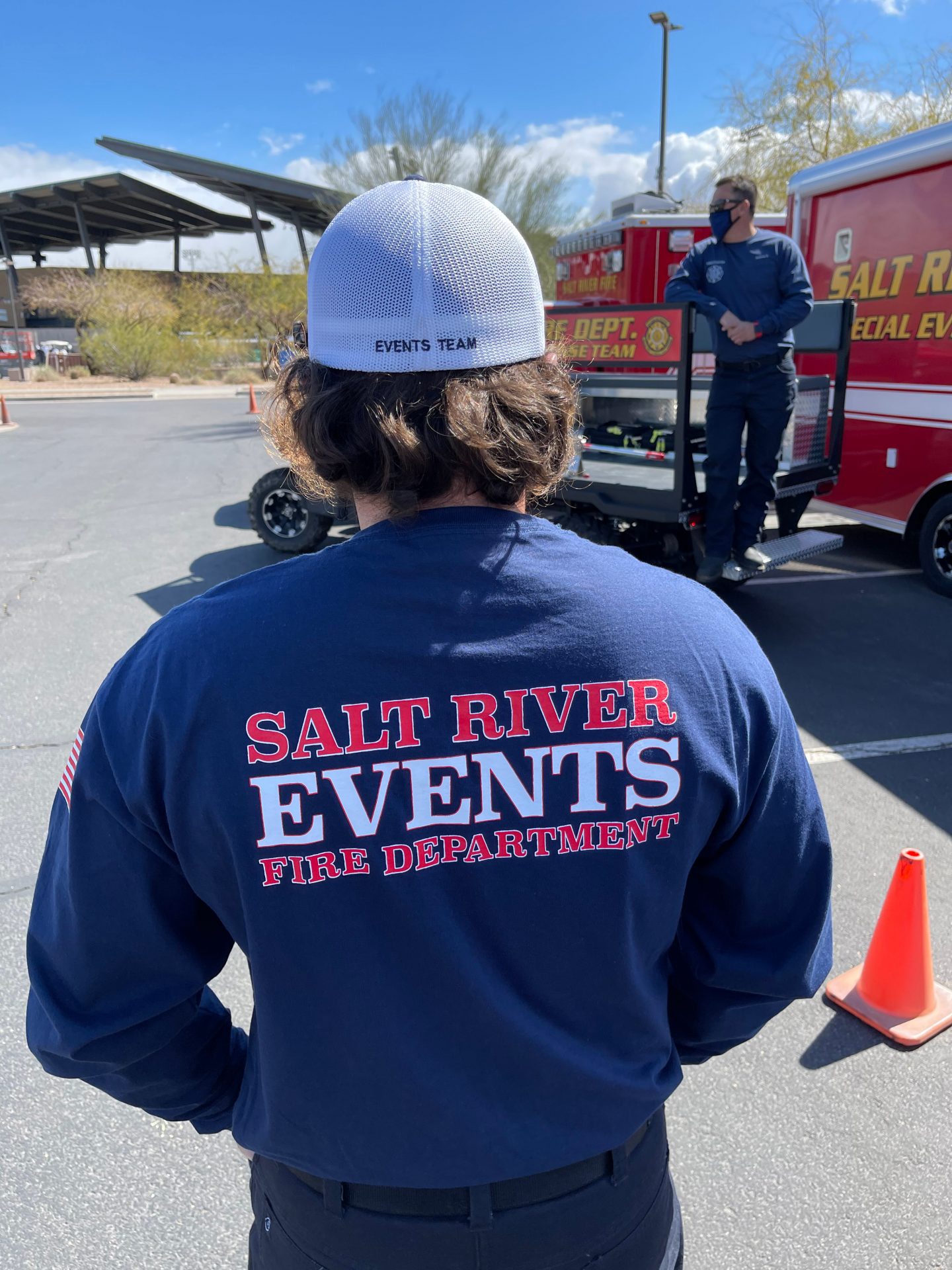
Anything can happen at a large public gathering in the Salt River Pima-Maricopa Indian Community, and the Salt River Fire Department Special Events Response Team (SERT) has all of the bases covered.
On any given day during spring training, the team sets up in the parking lot outside Salt River Fields at Talking Stick with the necessary emergency response equipment for the event, including medical equipment, bikes and a utility terrain vehicle (UTV) in a long trailer that is parked next to an ambulance.
The SERT was brought to the Community about two years ago under the direction of SRFD Fire Chief Daryl Dash. “Historically we had personnel walking around public events in teams of two providing EMS (emergency medical services) with equipment and gear in backpacks only. Although this did provide EMS service, we recognized that there was a better way of [delivering this service] to the Community, and that’s when we brought up this program,” said SRFD Battalion Chief Mike Mink.

As the Community has grown, so has the number of public gatherings. The SERT is deployed to public gatherings usually of 500 people or more, such as auto auctions, powwows, 5K runs and Community festivals. The team can be scaled to manage smaller events.
Although there are specific positions on the team that require technical certifications (bike and UTV operators), SERT essentially consists of all the members of the Salt River Fire Department. At a large event, the team will include an incident commander, an EMS room team, an EMS walking team and two EMS bike teams operated by bike-certified firefighters/EMTs.
The bike teams are split up into basic life support (BLS) or advanced life support (ALS). The BLS bikes carry supplies for basic medical care while the ALS bikes carry equipment to manage more severe medical issues (IV fluids, medications and advanced airway equipment).
The UTV is used in case the team needs to extract somebody who is injured a long distance from the ambulance. The UTV is equipped with gurney capabilities, oxygen tanks, medical supplies and protective ballistic gear (in case of an active shooter situation). The UTV helps the team be at the front line and take action before other forces arrive.

Response Team crew member Cristopher Ries shows off his Salt River
Events shirt and hat while the crew prepares for a day of event coverage
at Salt River Fields at Talking Stick.
SRFD firefighter/paramedic Cristopher Ries said that when the SRFD was planning for the Special Events Response Team, they looked around the nation and saw that a lot of the programs were just getting started. Fire departments had begun to realize that this is a needed service at large-scale events.
“We needed to have more than just the bicycles and the UTV; we needed to have training behind all our personnel,” said Ries. “So we sent 19 members to bike school, so they are certified to operate the bikes.”
The training, which was provided by the International Police Mountain Bike Association (IPMBA), covered how to respond to an emergency on the bikes, how to handle the weight from the medical gear on board, crowd navigation, and basic maintenance on the bikes. Some crew members were sent to bike mechanic school so the bikes can be serviced and maintained as a long-term investment for the safety of the Community. Everyone is trained on the UTV as well, so they know how to handle the vehicle on dirt and asphalt and how to operate it safely in an emergency.
The trailer that houses the equipment is state-of-the-art and includes a rolling bike rack that holds eight emergency response bikes, the UTV, medical supplies, ballistic gear, and enough bike tools and supplies to function as a fully operational bike repair shop. The trailer has an air-conditioning unit powered by an on-board generator to assist when the crew needs to fix a bike or attend to an injured person in the intense heat of summer in the Valley.
Chief Mink says that there are still several patients seen at each Community event, even with decreased attendance during the COVID-19 pandemic. The average spring training game at full capacity, for example, could see about 10 patients, and those numbers rise the hotter it gets outside.













